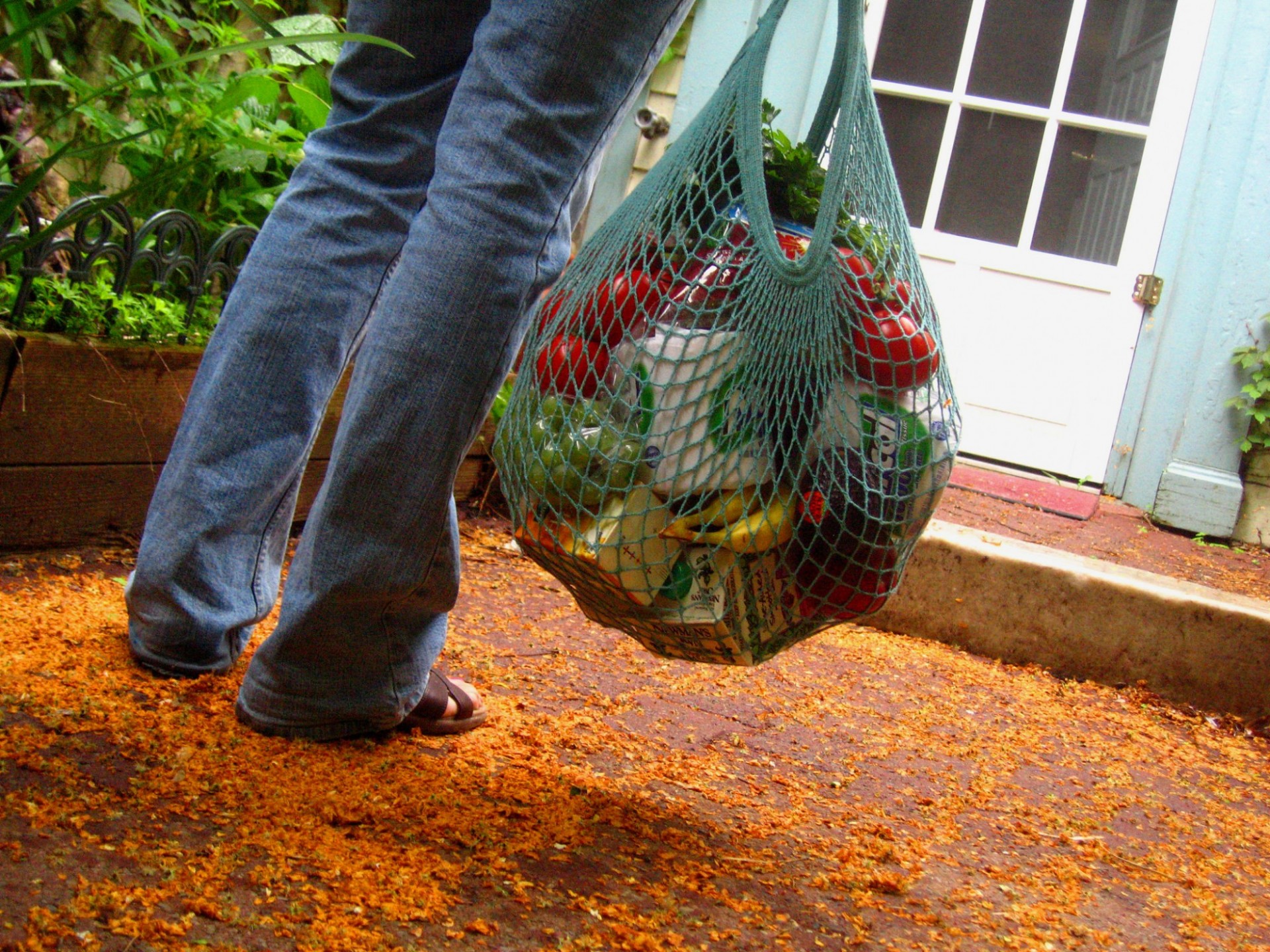Plastic Bag Bans: Where Do They Come From and Where Do They Go?
In less than half a century, plastic bags had made their way around the world and created the plastic pollution crisis that we are still attempting to solve today.

C+S 2020 students are blogging about topics that interest them for Applications in Climate and Society, a core spring class.
I often find myself waiting in line at the grocery store questioning if the plastic bag ban in my small Colorado town is going to have an impact on the global plastic issue. The bag of bags in my kitchen has depleted, and I find myself buying more garbage bags or willing to pay the 20 cents for a bag when I forget my own. And I wonder how we got into this plastic conundrum and how we get out of it.
Plastic bags are actually a pretty recent innovation despite being commonplace in basically every shopping center and take-out restaurant. Back in 1933, polyethylene (the chemical compound that makes the most common plastic) was created by accident in a chemical plant in England. This accidental formula opened up the possibility for industrial production and by 1965, plastic bags were making their rounds in Europe as a revolutionary product to help take home groceries from the store. They made their debut abroad in the U.S. in 1979. Just two decades later in 1997, Charles Moore discovered the Great Pacific Garbage Patch in the North Pacific Gyre. In less than half a century, plastic bags had made their way around the world and created the plastic pollution crisis that we are still attempting to solve today.
With the discovery of the garbage patch, the world began to understand the dangers of plastic, and Bangladesh put the world’s first plastic bag ban in place in 2002 after the flood-prone country found that single-use bags had started to clog the drainage systems it depends on. Since then, plastic bag bans have evolved; Kenya currently boasts the strictest ban on plastics, outlawing “the production, selling, and use of plastic utensils, plates, cups, straws, and water bottles.”
But while bans are becoming more common, plastic bags and other single-use items are still an everyday item. In the U.S. alone, 380 billion plastic bags are used every year.
A recent study on the California bag ban enacted in 2016 found that while plastic bag consumption in California dropped by 71.5 percent in the year following the ban, the consumption and disposal of other plastic products, such as garbage and reusable bags, has increased. This is a process known as leakage, which “occurs when partial regulation of consumer products results in increased consumption of these products in unregulated domains.” In this case, the study found that people who traditionally used plastic shopping bags for trash bags turned to other products because they no longer collected grocery bags while shopping.
The findings show that eliminating 40 million pounds of plastic produced by single-use bags targeted by the ban was offset by a 12 million pound increase in trash bag purchases. Those bags are heavier duty and more harmful to the environment than single-use bags of the same volume.
Consequently, plastic bag bans might not be as effective as we hoped.
While the California bag ban study and other similar ones have some pretty disappointing results, it doesn’t mean that bag bans aren’t useful. Bans are a starting point, not an end goal. People are looking for ways to change their behaviors to be more sustainable and environmentally conscious, and plastic bag bans have become instrumental in initiating behavioral change. As plastic bag bans have been implemented, studies have shown that they have caused a policy spillover effect where people living in places with bans show a greater awareness and support for other environmental issues. As a result, this spillover effect could facilitate greater environmental change, starting from plastic and working up.
